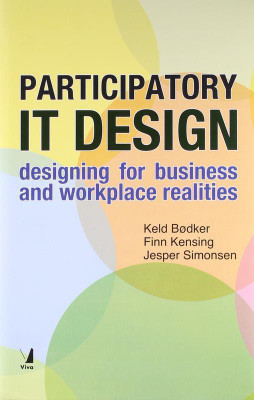Participatory IT Design: Designing for Business and Workplace Realities 1st Edition(English, Hardcover, Keld Bodker)
Quick Overview
Product Price Comparison
The goal of participatory IT design is to set sensible, general, and workable guidelines for the introduction of new information technology systems into an organization. Reflecting the latest systems-development research, this book encourages a business- oriented and socially sensitive approach that takes into consideration the specific organizational context as well as first-hand knowledge of users' work practices and allows all stakeholders - users, management, and staff - to participate in the process. Participatory IT Design is a guide to the theory and practice of this process that can be used as a reference work by IT professionals and as a textbook for classes in information technology at introductory through advanced levels. Drawing on the work of a ten-year research program in which the authors worked with Danish and American companies, the book offers a framework for carrying out IT design projects as well as case studies that stand as examples of the process. The method presented in Participatory IT Design - known as the MUST method, after a Danish acronym for theories and methods of initial analysis and design activities - was developed and tested in thirteen industrial design projects for companies and organizations that included an American airline, a multinational pharmaceutical company, a national broadcasting corporation, a multinational software house, and American and Danish universities. The first part of the book introduces the concepts and guidelines on which the method is based, while the second and third parts are designed as a practical toolbox for utilizing the MUST method. Part II describes the four phases of a design project - initiation, in-line analysis, in-depth analysis, and innovation. Part III explains the method's sixteen techniques and related representation tools, offering first an overview and then specific descriptions of each in separate sections. About the Author Keld Bodker is Associate Professor of Computer Science at Roskilde University, Denmark. Finn Kensing is Associate Professor at The IT University of Copenhagen, Denmark. Jesper Simonsen is Associate Professor of Computer Science at Roskilde University, Denmark. Table Of Contents Introduction Concepts and Principles IT Design Principles of the Method Phases of the Method Phases, Decisions, and Contexts Initiation Phase: Project Establishment In-Line Analysis Phase: Strategic Alignment Analysis In-Depth Analysis Phase: Ethnographic-ally Inspired Analysis Innovation Phase: Vision Development Method, Tools, and Techniques An Overview of Techniques Tools and Techniques


